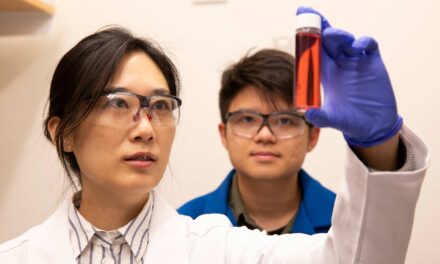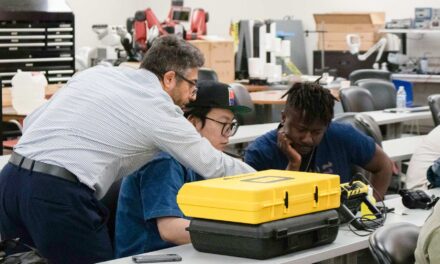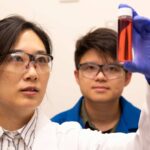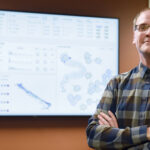
Biomedical engineers land second place in NIH’s DEBUT challenge
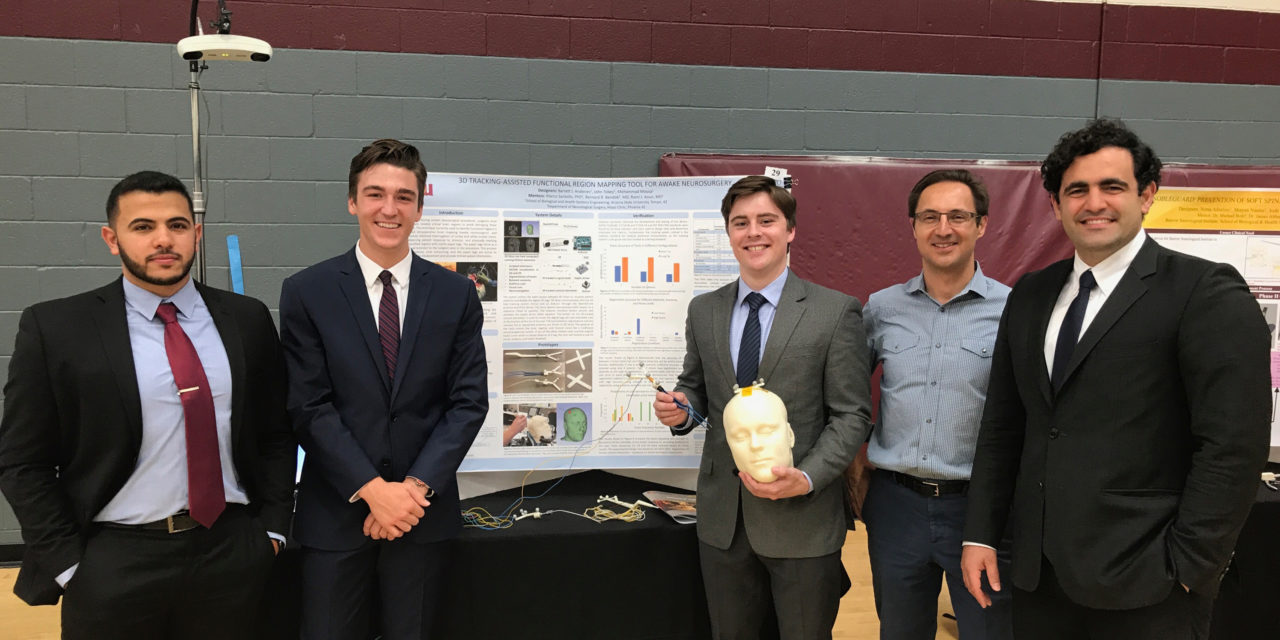
Above: Left to right, biomedical engineering students Mohammad Mousa, John Tobey and Barrett Anderies pose for a photo with Professor Marco Santello, director of the School of Biological and Health Systems Engineering and Dr. Rami Aoun, of the Mayo Clinic’s Department of Neurological Surgery at the SBHSE capstone project showcase in April 2017. Photo courtesy of Barrett Anderies
The layout and organization of each individual’s brain is unique, meaning the portions controlling language, sensory input and movement vary from person to person. Because of these subtle differences, brain surgery requires mapping important function areas to ensure a safe procedure.
A team of biomedical engineering students looking to make surgeries safer recently landed second place in the Design by Biomedical Undergraduate Teams challenge for their innovative 3D brain mapping tool, called NeuroMap. The challenge, which “recognizes undergraduate excellence in biomedical design and innovation,” is a joint effort between the National Institutes of Health’s National Institute of Biomedical Imaging and Bioengineering and VentureWell, a nonprofit that helps faculty and student innovators turn their ideas into successful, socially-conscious businesses.
The student team, comprised of biomedical engineering graduates Barrett Anderies, Mohammad Mousa and John Tobey, were awarded $15,000 for their design of their 3D mapping tool, which began as the team’s capstone project. NeuroMap digitizes brain mapping, allowing surgeons to test whether brain tissue controls a critical area while applying digital tags to the surface of the brain. The digital tags would then provide warning cues if surgical tools approach tagged areas, allowing surgeons to operate without referencing a brain map.
“Achieving a second place award in the NIH DEBUT is very exciting for us,” says Tobey, who is currently working toward his master’s degree in biomedical engineering at ASU. “It is an acknowledgment of our hard work and an extremely welcome accolade.”
“This award holds great meaning to us,” says Mousa. “It is very humbling to receive recognition for the work we have accomplished in the last year.”
Though the trio were undergraduates when they completed the project, all three have graduated with their bachelor’s degrees in biomedical engineering. Anderies, who dual-majored in mathematics and biomedical engineering, recently completed a summer internship at the Mayo Clinic and Mousa is enrolled at the University of Arizona’s College of Medicine to attain his medical degree. In addition to his master’s work, Tobey also works as a student researcher in biomedical engineering Assistant Professor Vikram Kodibagkar’s ProBE Lab. Upon finishing his master’s degree in spring 2018, he plans to enroll in ASU’s biomedical engineering doctorate program under Kodibagkar’s guidance. Anderies was recently offered a full-time position at Mayo and plans to continue developing NeuroMap.
The competition’s submissions were judged on the significance of the problem being addressed; impact on potential users and clinical care; innovative design and the functionality of the prototype.
The team plan to accept their award in October during the Annual Meeting of the Biomedical Engineering Society, held in Phoenix, Arizona.
Learn more about NeuroMap below:


